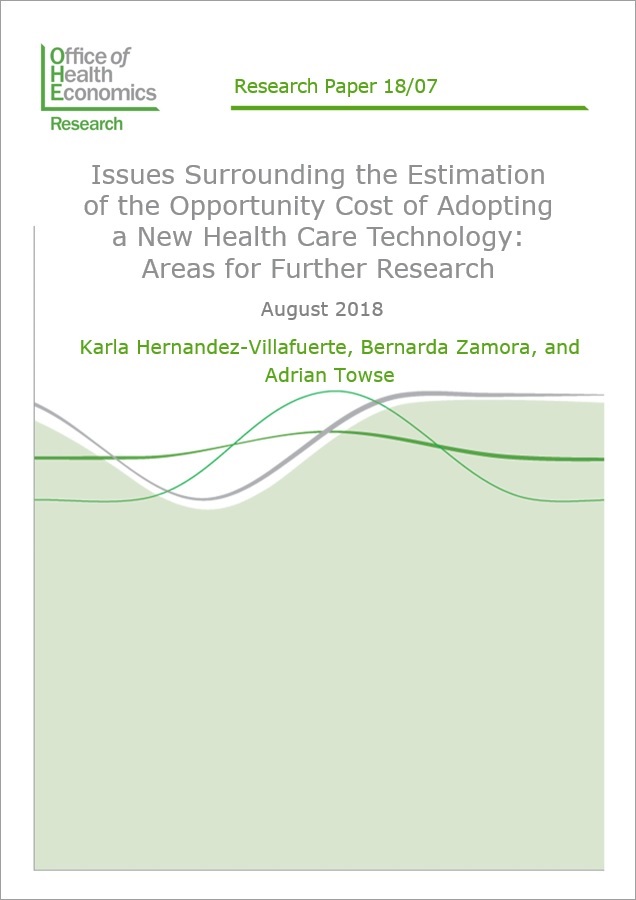This OHE Research paper by Karla Hernandez-Villafuerte, (German Cancer Research Center, DKFZ), Bernarda Zamora (OHE) and Adrian Towse (OHE) sets out a research agenda proposing new…
This OHE Research paper by Karla Hernandez-Villafuerte, (German Cancer Research Center, DKFZ), Bernarda Zamora (OHE) and Adrian Towse (OHE) sets out a research agenda proposing new approaches in three areas to improve understanding of supply side opportunity costs for the English NHS. A…
This OHE Research paper by Karla Hernandez-Villafuerte, (German Cancer Research Center, DKFZ), Bernarda Zamora (OHE) and Adrian Towse (OHE) sets out a research agenda proposing new approaches in three areas to improve understanding of supply side opportunity costs for the English NHS. A subsequent paper will set out the authors research findings.
First, it is possible that some purchasers can introduce health services by improving efficiency rather than displacing an existing activity. Data Envelopment Analysis (DEA) can be used to explore differences in commissioner efficiency.
Second, health authorities (PCTs) have differences in their production functions. The paper set out evidence of this from a cluster analysis of PCTs. Purchasers may displace those services with relatively smaller health losses. Current approaches estimate the relationship between expenditures and health outcomes using a linear regression methodology. However, if health locations are heterogeneous, a methodology that does not focus on the mean is preferable. One possible approach is to employ a quantile regression function which can accommodate non-linearity in the relationship between expenditures and outcomes, and variation in outcome elasticities at the margin.
Thirdly, there are observable health outcomes reflecting purchaser priorities other than reducing mortality. Use of DEA to analyse multi-outcome decisions will allow a more robust estimate of the cost effectiveness threshold given the sources of local heterogeneity.
The proposed methods aim at gaining insight as to extent of the heterogeneity of supply side opportunity costs across English health services and how an estimate of a supply side threshold that takes account of this might be established.
